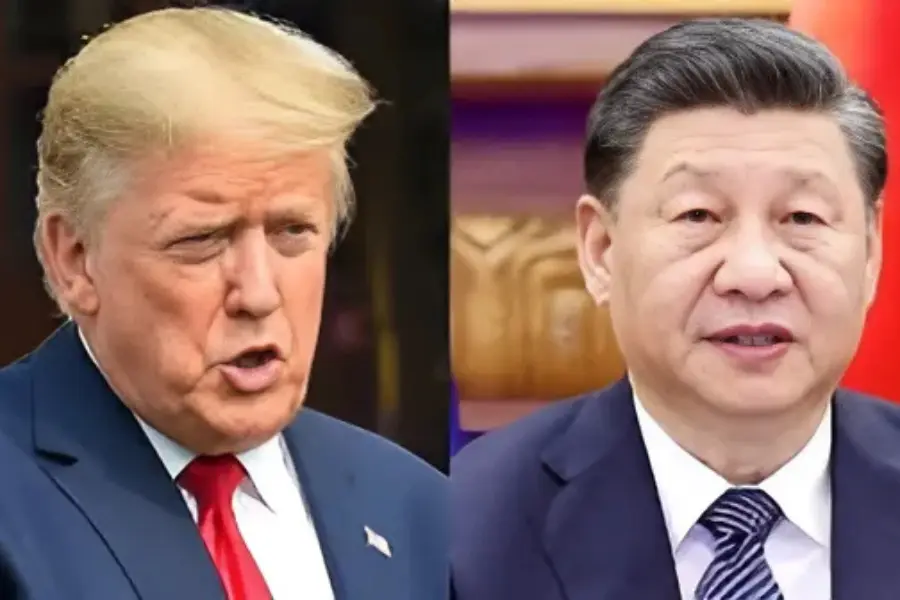
China Holds Firm against Trump’s Tariff Threat as Trade Tensions Escalate
As trade tensions between the U.S. and China worsen, Donald Trump’s tough tariff position received firm resistance from Beijing. In a bold response, Trump made the shocking statement to impose an additional 50% tariff on Chinese products. China recently announced a 34% retaliatory reciprocal tariff on U.S. products. This announcement rattled global markets and caused backlash in China.
What Prompted the Recent Trade Conflict?
On April 1, Trump announced that China would receive a 50% increase in tariffs. It will be like this unless it removed the announced 34% retaliatory reciprocal tariff on U.S. products, set to kick in on April 9. With that announcement, the economic relationship between the two largest economies was put under more pressure than before. The Trump administration stated that its trade actions are prompted by China’s unfair trade practices. It also included currency manipulation, and illegal subsidies, among other topics. Trump declared on TruthSocial, that international entities imposed tariffs against the U.S. should expect, even stricter “retaliation” – a clear example of Trump’s zero-tolerance approach to economic responses.
China’s Strong Reaction: “We Will Fight Until the End”
The response from China’s Ministry of Commerce has been swift and severe; calling the tariff threats “extortion” and “a blunder on top of a blunder.” The statement issued by the ministry warned that China would never submit to intimidation, and would take any necessary countermeasures to protect its sovereignty and economic interests. “Last but not least, if the U.S. continues with its current situation, China will stand up to the very end,” the statement reads, which indicates southern Beijing has geared up for a long-term economic war.
China Takes Counteractions
In retaliation, the China Ministry of Finance announced a 34% tariff on all U.S. imports starting April 10. However, China isn’t finished retaliating. They also announced export controls on critical rare earth mineral, including:
- Samarium
- Gadolinium
- Terbium
- Dysprosium
- Lutetium
- Scandium
- Yttrium
These materials are vital for advanced industries, such as defense, electronics, and renewable energy. The rules, which take effect on April 4, will severely impact supply chains and increase costs for U.S. manufacturers.
Impact on Global Markets
The intensification of the trade dispute between the U.S. and China has led to swift and broad consequences in the financial markets. On Wall Street, the Dow Jones Industrial Average has dropped more than 17 percent from its high. The Nasdaq has entered into bear market territory already, due to fears of a global recession. Asian markets faced struggles as well. The Hang Seng Tech Index fell by 27 percent in just a week and erased gains it had made earlier in the year. The Chinese yuan fell to the lowest level since January, and bond markets experienced a surge in investor interest as people moved to a safe investment.
Global Response and Diplomatic Impact
The global response ranged from worry to denouncing the retaliations. China’s state owned Global Times called the U.S. increases in tariffs “economic extortion” disguised as reciprocity. It asserted that Washington was abusing its economic muscle and interfering with global standards of trade. Additionally, Trump’s announcement of 26 percent reciprocal tariffs on products from India added to the number of affected countries and further complicated trade relations. He continued by stating that no negotiations would occur with China and U.S. trade discussions would take place with other nations very soon.
Consequences for Corporations
As the reciprocal trade battle persists, businesses and investors around the globe continue to monitor developments. Latest news on business illustrates the concern regarding the stability of international trade, in addition to the long-term impact of separating the U.S. and China. Supply chains may need to be adjusted, and firms may identify new markets or suppliers, to avoid being caught in the trade battle.
Industries that are highly dependent on rare-earth elements or rare-earth exports will have the most stake in the unpredictable economic conditions in trade.
Looking Ahead
As the deadline for tariffs arrives, and no signs of relief can be identified, the world is getting ready for more uncertainty. The coming weeks could be critical for determining the future of U.S.-China relations and the overall economy. For now, one fact is certain – both economic giants seem eager to settle in for a long engagement, with no view to resolution.









I don’t think the title of your article matches the content lol. Just kidding, mainly because I had some doubts after reading the article. https://accounts.binance.com/register-person?ref=IXBIAFVY